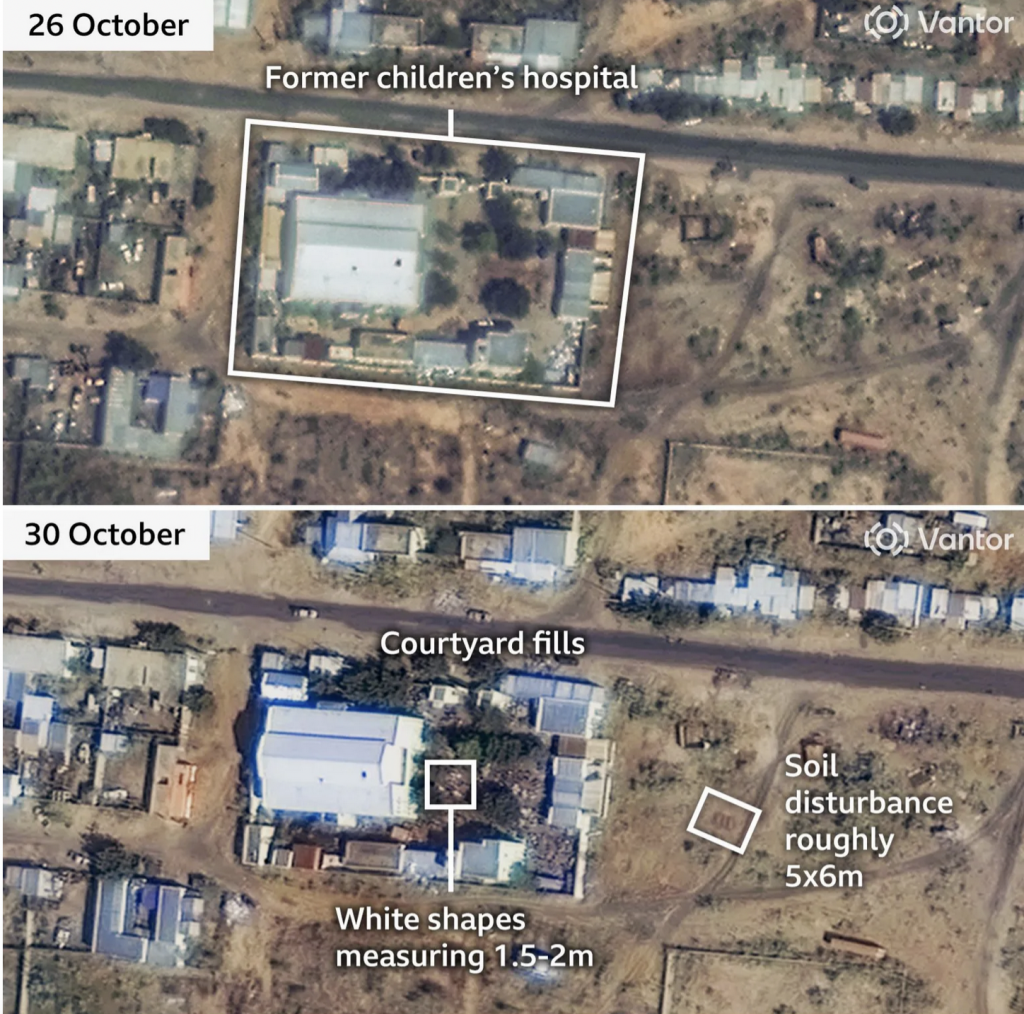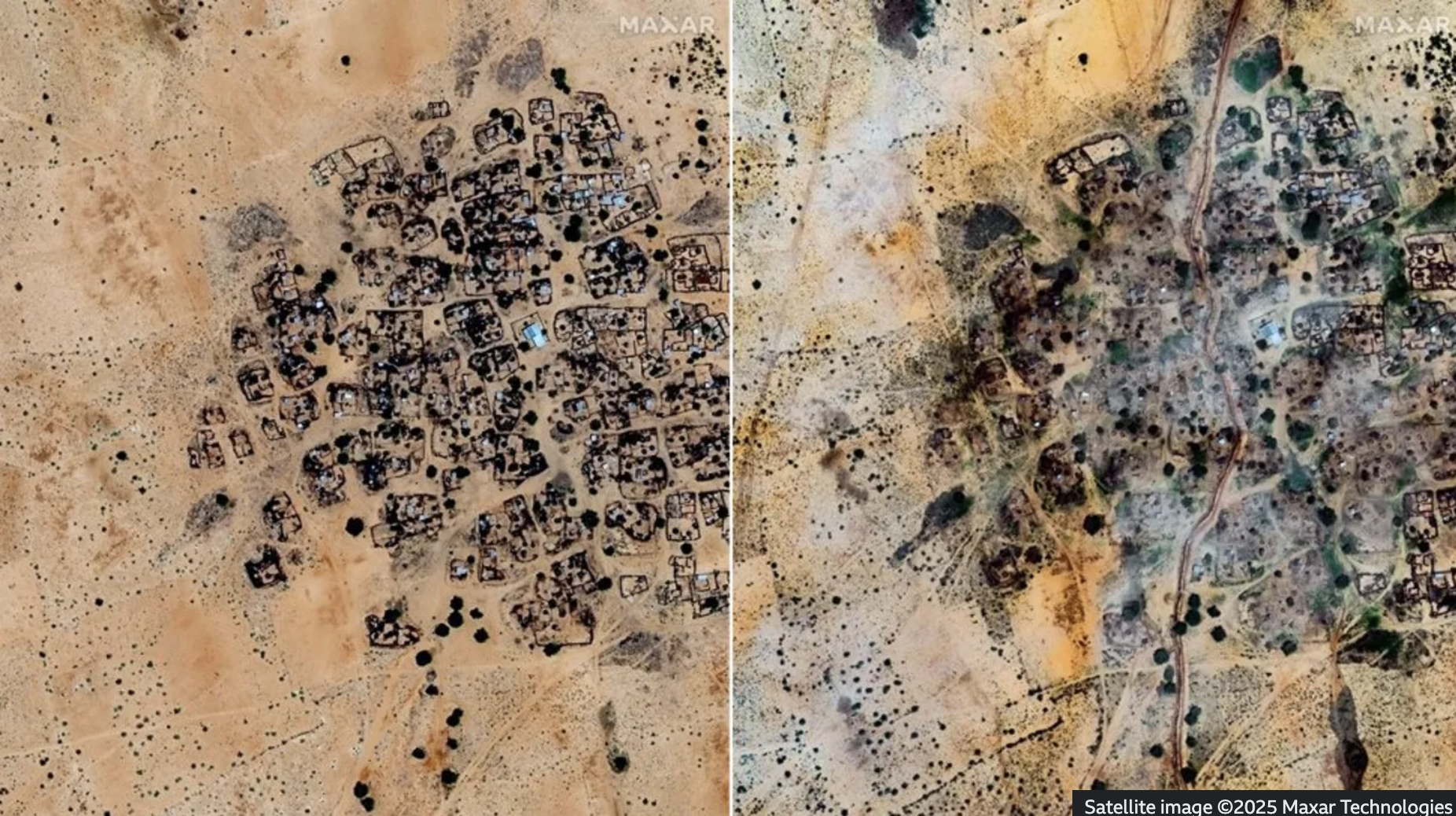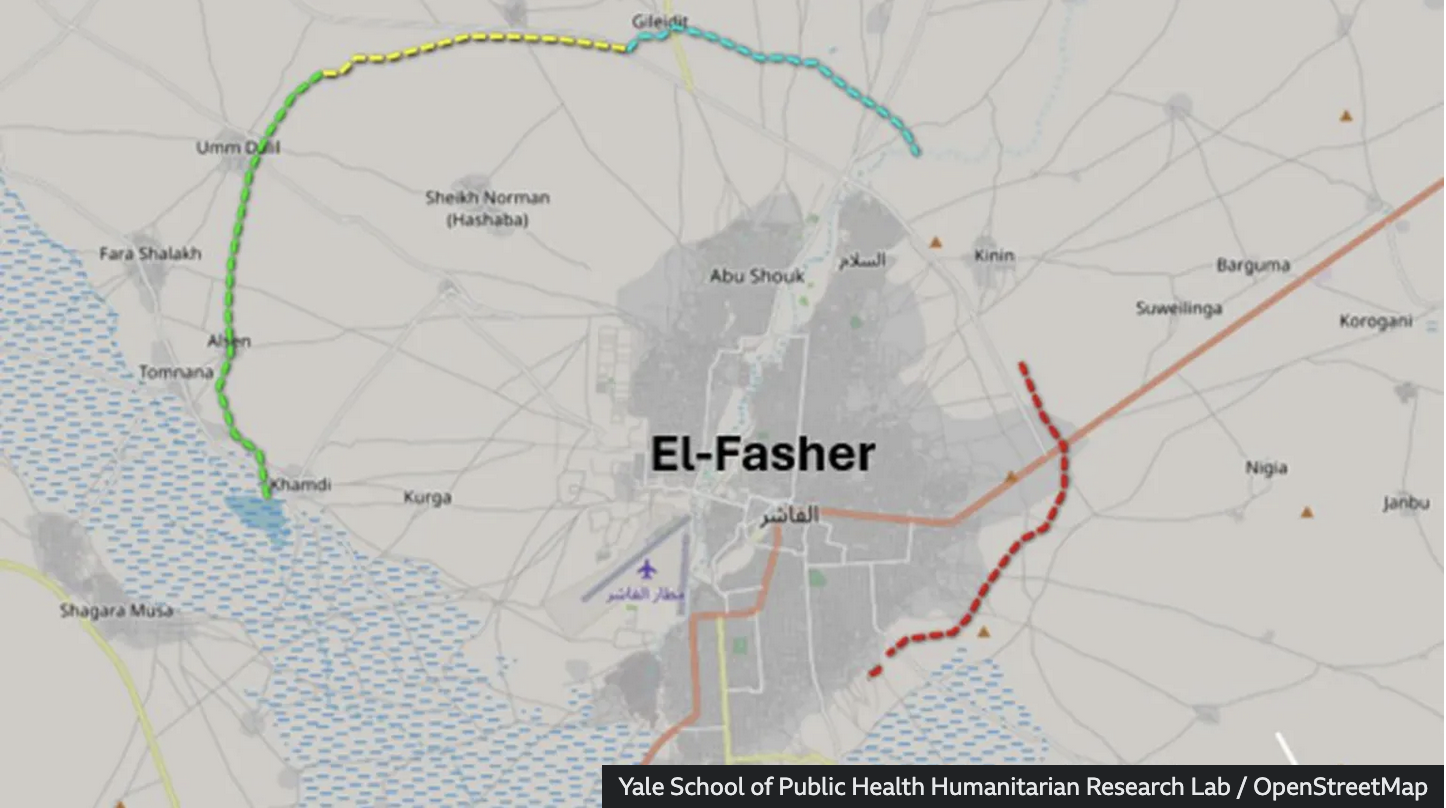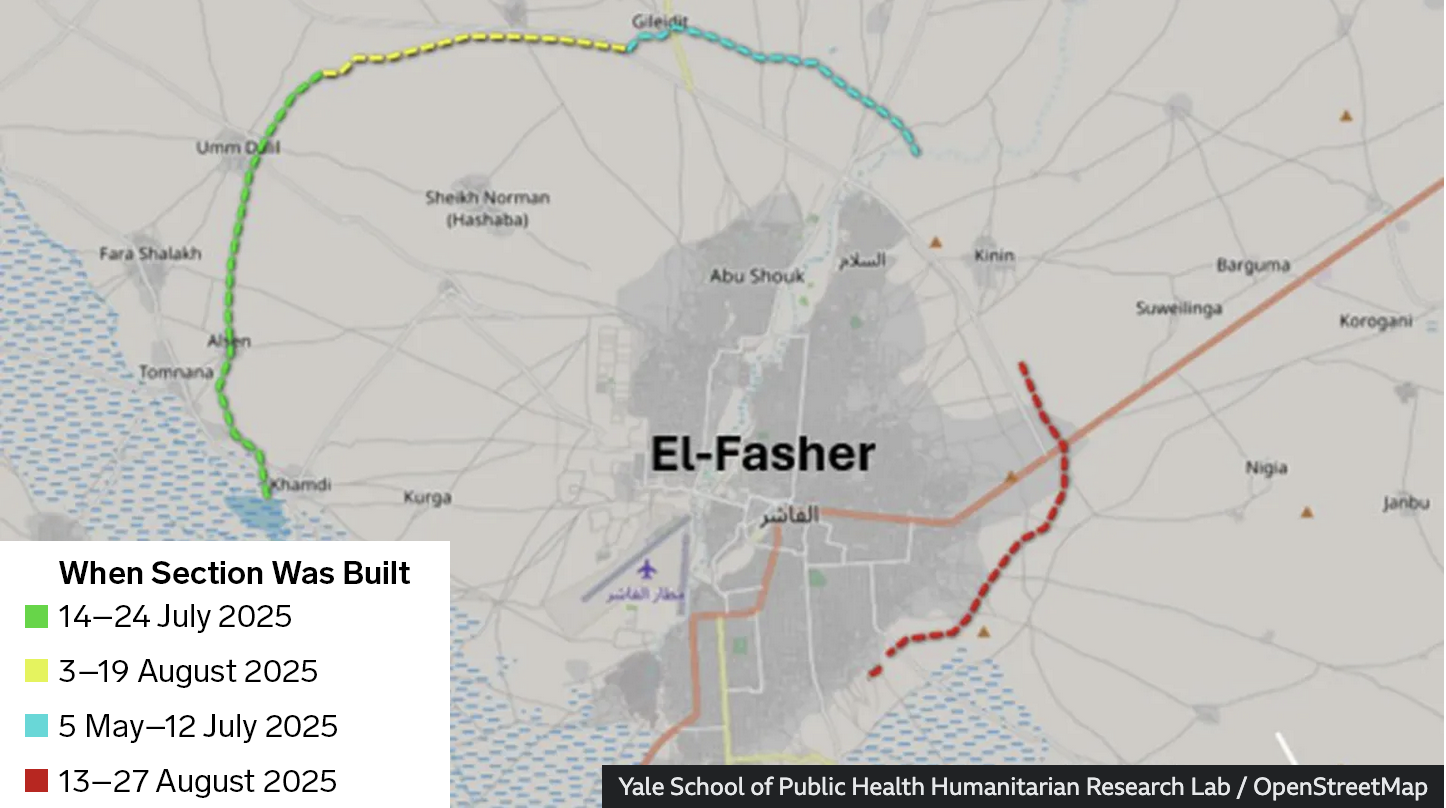Back in September I wrote about the siege of el-Fasher in Sudan, wherein the town and its government defenders faced the paramilitary rebel forces, the Rapid Support Force (RSF). At the time the RSF besiegers were constructing a wall to encircle the town and cut residents and defending forces off from resupply and reinforcements.
At the end of October, RSF troops pushed into el-Fasher and captured the main government military base, effectively ending resistance in the town. Brutality followed suit.
In the following three weeks, social media footage has evidenced mass killings and summary executions. Satellites high above the conflict have captured images of mass graves dug and filled.
This graphic from a BBC article covering the horror includes a four-panel small multiple of satellite photos of a children’s hospital in the city. The first two images, screenshot here, capture the day before the city’s fall and then a few days later the appearance of likely bodies and the digging of a small mass grave.

The rest of the graphic in the article details the worsening of the situation.
In my September post I commented about how the RSF besiegers used one of mankind’s most ancient forms of warfare. Two months later they followed that up by another of mankind’s most ancient forms of warfare: slaughter the inhabitants of a captured town.
Suffice it to say the article’s content does not make for an easy read. The graphics buttress the article with a necessary, but cold clinical detachment as it is not as if the RSF will allow journalists or statisticians into el-Fasher to catalogue their crimes.
The graphics comprise a number of satellite photographs along with a few social media videos and images linking the RSF to the mass killings. The designers annotated the photographs clearly and they communicate just what we know about the crimes without any added hyperbole or hysteria. A well done piece.
Unfortunately, as for the subject matter, it does not look like things in Sudan will be getting any better anytime soon.
Credit for the piece goes to the BBC graphics team.



